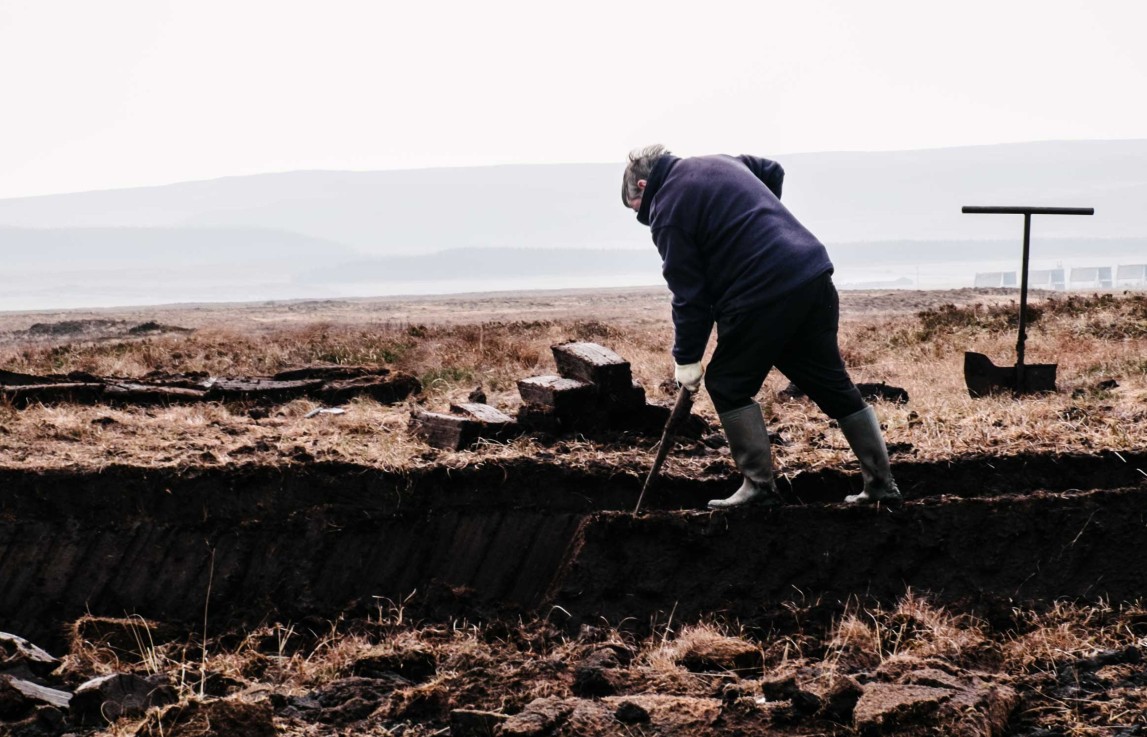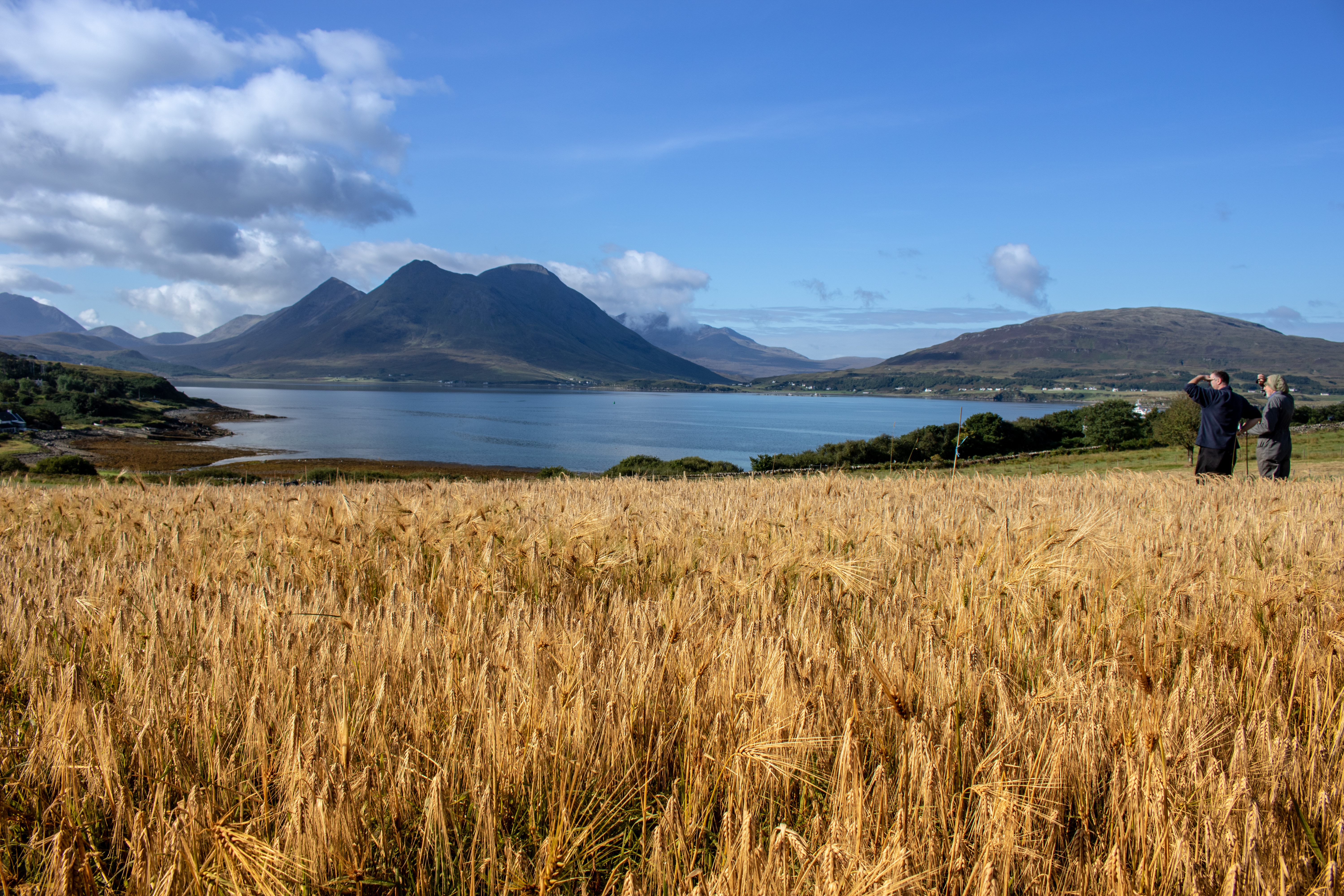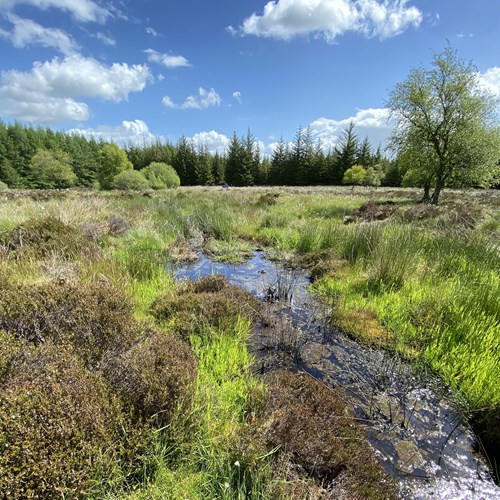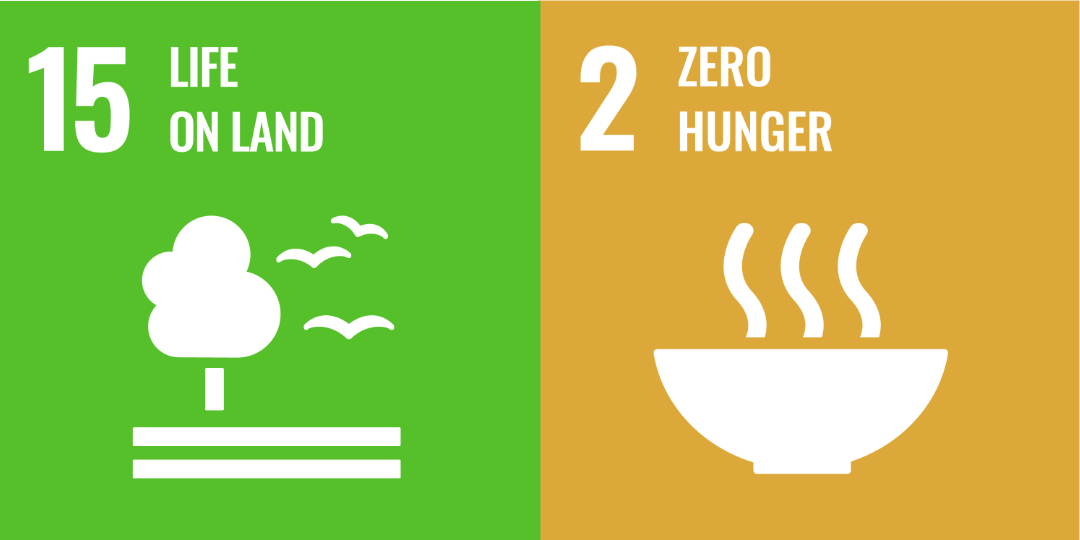Caring for the Land

Part of the landscape
For many, Scotch Whisky is Scotland.
Each expression of Scotch Whisky has its own character that reflects the landscape around it, its flavour profiles influenced by crucial raw materials including grain, water, and in many cases, peat. It is our responsibility to ensure that we use these materials carefully and responsibly, and our work as the SWA helps to support best practice across the membership.
Peat
Peatlands are one of Scotland’s most important carbon stores, as well as supporting water quality and improving biodiversity across the country. The Scotch Whisky industry also uses a small quantity of peat from a handful of sites in Scotland, solely to impart barley with a distinctive smoky character during the malting process. This is then used in certain whiskies to provide their unique flavour. As a user of peat, we are determined to play a key role in preserving and restoring this habitat however we can. Our Commitment to Responsible Peat Use, launched in 2023, outlines how our industry is extracting peat as responsibly as possible, using it efficiently, and driving peatland restoration. We support the International Union for the Conservation of Nature (IUCN) UK Peatland Strategy 2040 and work closely with a growing network of stakeholders to advocate for a better understanding of peatlands and to promote further restoration activity across the country.
The launch of the Scotch Whisky Associations sector strategy, highlighting the ambition of its members to demonstrate responsible stewardship for the land, water, products and packing it uses, is very welcome. We look forward to working with the Association to help deliver the peatland conservation and restoration goals set out in the UK Peatland Strategy.
Emma Goodyer, IUCN UK Peatland Programme Leader

Cereals and Scotch Whisky
We will work with agricultural partners to explore how we can make sure our barley, and the other cereals we use for producing Scotch Whisky, support our Net Zero ambition and improve environmental management on farms. Agricultural emissions are some of the hardest to reduce, but are important to tackle in our journey to Net Zero. We are collaborating with farmers and maltsters to help find sustainable solutions through research and development, while exploring new technologies and techniques that reduce emissions and improve environmental performance whilst still delivering high quality cereals for use in the malting process.

The MAGB supports the publication of the Scotch Whisky Industry Sustainably Strategy 2040 which it considers as ambitious and in line with government targets to achieve net zero carbon emissions. As a major supplier to the scotch whisky industry, the sustainability goals within the malting sector are crucial to helping SWA achieve its targets.
Adrian Dyter, Chairman of The Maltsters’ Association of Great Britain
Peat: responsibility, efficiency, restoration
"Our peatlands are the country’s lungs, storing around 1.6 billion tonnes of carbon, and are key in our response to the climate emergency. The association between peat and whisky is longstanding and deeply embedded in our culture."
- Francesca Osowska, Chief Executive of NatureScot
Peatland is an important store of carbon and plays a vital role in tackling climate change. A significant part of the UK’s peatland habitat is found in Scotland. Our industry understands it has a duty of care to this vital resource and carbon sink.
Some of our distilleries use peat to add character and aromas into their spirit. As well as the industry’s iconic peated Single Malts, distillers also regularly use peated whisky as a base for blended Scotch.
The industry continues to use a very small amount of peat from a handful of sites in Scotland. But, thanks to our industry’s reach both at home and abroad, we want to use our position to show leadership on this important issue.

Ardmore Distillery, Suntory Global Spirits
Suntory Global Spirits launched the Peatland Water Sanctuary™ initiative, committing to replenish as much peat as is used to create their peated whiskies by 2030, and doubling this target by 2040. The programme is investing over $4.4 million into the restoration and conservation of a minimum of 2,600 hectares of peatlands by the end of the next decade, which will help protect high quality water sources across Scotland. With 14 hectares already restored near the company’s Ardmore distillery, 70 hectares near its Bowmore and Laphroaig distilleries on Islay, and another 160 hectares of restoration in progress in East Ayrshire, Suntory Global Spirits is working with local partners such as the RSPB, Forestry and Land Scotland and the James Hutton Institute to further Scotland’s sustainability and biodiversity ambitions and net-zero goals.
We have already worked with NatureScot to help steer Scotland’s National Peatland Plan. Now, our industry’s own Commitment to Responsible Peat Use covers three priorities:
Responsible Extraction
The SWA will expect the highest standards of care to be applied to its members’ extraction sites and is committed to working with third parties across the peat supply chain to minimise overall impact.
Optimising the Malting Process
We will work closely with the Scotch Whisky Research Institute (SWRI) and the Maltster's Association of Great Britain (MAGB) to support ongoing research to maximise the efficiency of the malting process and reduce overall emissions.
Peatland Restoration and Stewardship
The SWA will strive to support ongoing peatland restoration efforts throughout our membership by deepening relationships between SWA members and the organisations spearheading restoration activity.
The CRPU has been created by peat experts from across our industry and supply chain, and reviewed by stakeholder bodies including RSPB and the Maltsters Association of Great Britain. It sets a direction of travel for the Scotch Whisky industry as we work to improve our use of and relationship with peat in these three priority areas.
Grain: our footprint and our future
Cereals, and particularly barley, are at the heart of Scotch Whisky production.
As a key user of barley in Scotland, the Scotch Whisky industry has a duty to support an effective policy environment and changing farming practices in collaboration with farmers, suppliers and regulators. With the right approach, reducing emissions in cereal production has the added benefit of protecting and enhancing the biodiversity and soil health of arable land, not only reducing emissions but enhancing the environment of our farming landscapes.
As a crucial step in our industry achieving true Net Zero (across Scopes 1 to 3), it is vital that we significantly reduce greenhouse gas emissions from our grain supply chains.
Innovation and Research
The future success of the industry is reliant on a resilient and sustainable Scottish grain supply. Breeding future cereal varieties fit for a new system of farming and the changing climate is key to realising that future. SWA members are supporting cutting edge research for a sustainable malting barley supply chain. The BARIToNE programme is a £3.6Billion BBRC and industry funded seven year programme of PhDs led by the Scotch Whisky Research Institute (SWRI) and the International Barley Hub (The Hutton Institute). SWA members are funding 9 PhDs researching the medium-long term challenge of maintaining a sustainable supply of local high-quality barley, produced using fewer inputs and having fewer environmental impacts

Regenerative Agriculture: Diageo
Working in harmony with the natural environment, regenerative agriculture is a holistic approach to farming that uses best agricultural practices to produce crops while also delivering beneficial outcomes for soil health, climate, water, and nature. In 2023, Diageo launched a three-year regenerative agriculture programme focused on reducing the carbon emissions from growing barley and wheat, essential to the production of Scotch whisky, including Diageo’s own blends and single malt whiskies. Collaborating with around twenty farms across Scotland and technical partners at Agricarbon, James Hutton Limited, Scottish Agronomy and SAC Consulting, the programme aims to share knowledge to support regenerative agriculture practices that can be delivered across the industry and more widely, building resilience across farming systems and supporting a reduction in Scope 3 carbon emissions.
